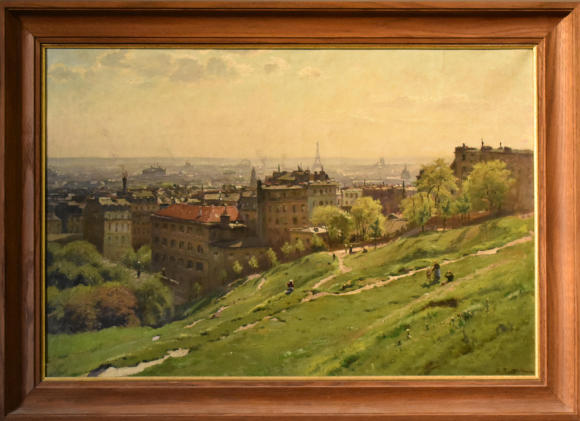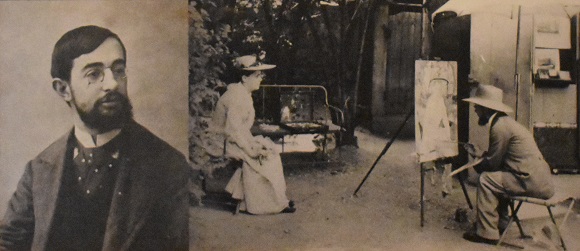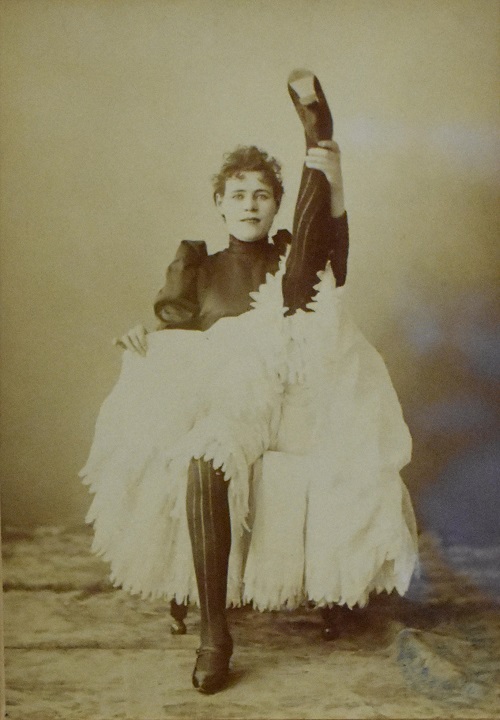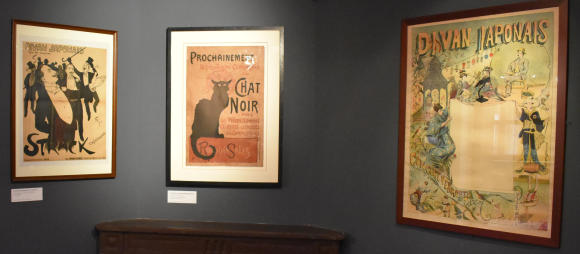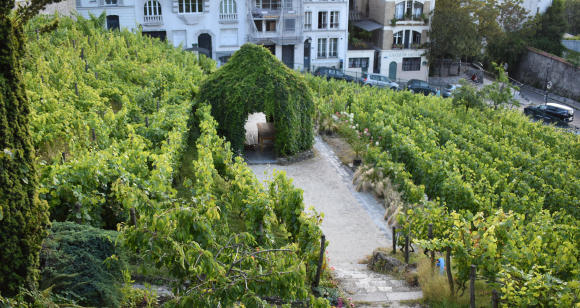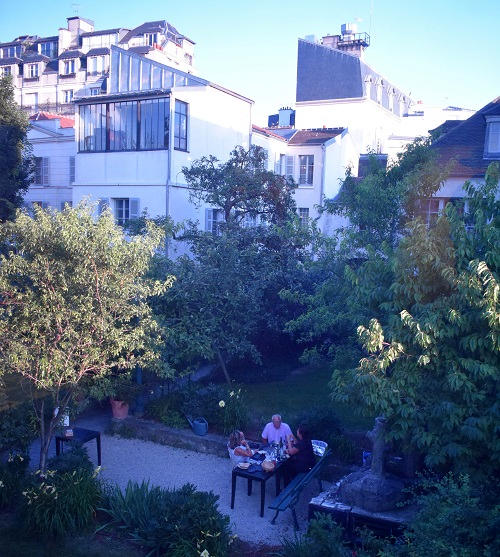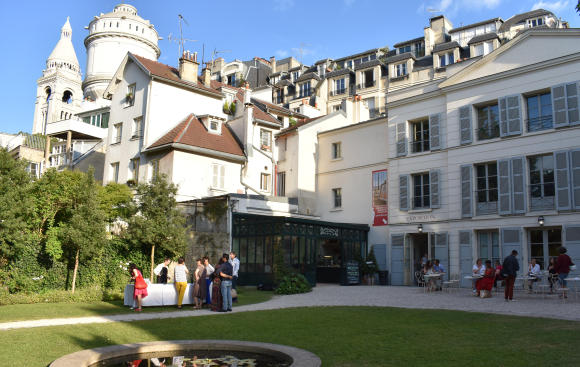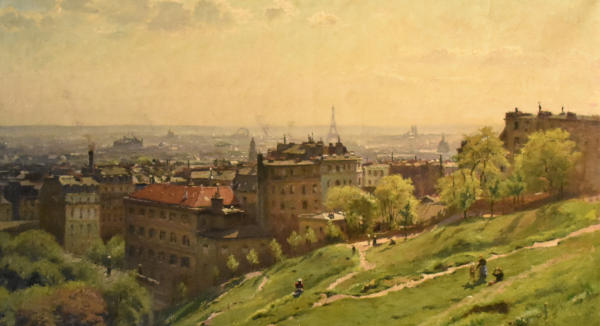
So you’ve been to Montmartre.
You’ve looked up at the wedding cake basilica of Sacré Cœur. You’ve looked down at the grey rooftops of Paris. You’ve sidestepped a beggar. You’ve seen a guy standing motionless like a statue. You’ve seen the mosaic Jesus inside the church. You’ve dodged marauding portrait sketchers as you then walked to Place du Tertre. You’ve wondered how a piece of tourist art might look in your bathroom. Perhaps you’ve had coffee, ice cream, a beer or, god forbid, lunch on the square.
You’ve been there alright. But have you done that?
Certainly not. Butte (Hilltop) Montmartre, as it’s known to Parisians, concerns the entire surrounding hump of the hill, not just the crowd-pleasing hilltop chart-toppers.

In order to “do that” you might set off on a treasure hunt to find the following:
– the Love Wall,
– the Bateau-Lavoir, a maze of studios that was a hotbed of creativity in the early 1900s.
– the sculpture of the man who walked through walls, in honor of the writer Marcel Ayme,
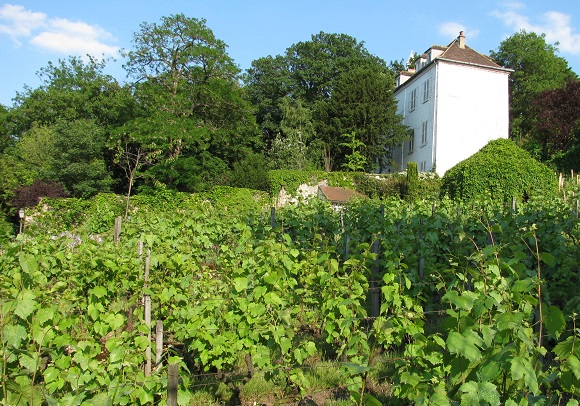
– the vineyard,
– the cabaret Au Lapin Agile,
– the sculpture of the man who walked with his head in his hands, in honor of Saint Denis,
– the bust of the Dalida, an Egyptian-French singer who was a cross between Maria Callas, Judy Garland and Cher,

– two or three windmills,
– the monument to Théophile-Alexandre Steinlen, an artist, anarchist and cat-lover,
– the statue of the Chevalier de la Barre, a knight who was tortured then beheaded for blasphemy and became a symbol of the intolerance of a religious majority,
– and the bust of Francisque Poulbot, an illustrator of posters and other images featuring Parisians and particularly street kids, as well as one of the founders of the Republic of Montmartre.
There, I’ve just outlined many of the sights and characters you’d meet on my 3-hour Montmartre tour, minus the café, the bar and a church or two. But rather than take you on that tour in this article I wish to lead you directly to the location of the bust of Poulbot, the last on that list. Your treasure hunt ends here.
While all of the others on my list can be seen from streets and squares, you have to enter the garden at the Musée de Montmartre (the Montmartre Museum) in order to meet Pouilbot.
The Montmartre Museum is just 300 yards from Sacré Coeur and Place du Tertre yet it feels well off the beaten track. As it should since this is a connoisseur’s museum with a quiet garden café.
The museum’s permanent collection occupies a 17th-century building within a small park, just behind a zone of former studio-residences. Those studio-residences once hosted Auguste Renoir (he painted Dance at the Moulin de la Galette at this address), Suzanne Valadon, Émile Bernard and other artists from the heydays of the Montmartre art scene.
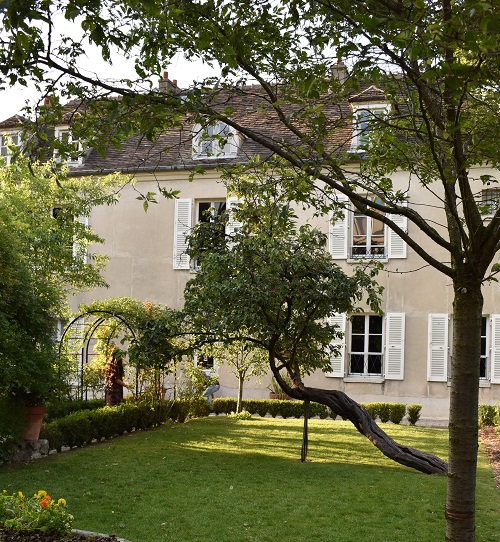
The museum pays homage to the artists associated with Montmartre from 1870 to 1914 (i.e. much of the period covered by the Orsay Museum) and to life in the cafés and cabarets during that time.
In the permanent collection you’ll meet the likes of:
– Alfred Renaudin through his painting on 1899 prior to the construction of the steps leading up to Sacré Coeur,
– Henri de Toulouse-Lautrec (1864-1901), an artist who was drawn to the bohemian and often debauched life of Montmartre,
– Yvette Guilbert (1865-1944), an actress and singer associated here with Montmartre’s café-concert scene of the 1890s. Hear her sing here.
– And can-can dancers, of course.
You’ll see posters. (The famous illustration for the café Le Chat Noir is by Steinlen, mentioned above.)
Including the Moulin Rouge, of course.
The gardens surrounding the museum offer a view of the vineyard of Montmartre from one corner,
a secluded picnic table in another,
and mostly an airy portion around a central basin, where visitors can get a drink or a snack from Café Renoir.
The current temporary exhibition at the museum, until August 26, concerns Van Dongen and the artists of the Bateau-Lavoir.
So where’s the bust of Pouilbot? I leave that to you to find on your treasure hunt.
Musée de Montmartre, 12 rue Cortot, 18th arr. The museum is open daily 10am-6pm, until 7pm April-Sept. Café Renoir, which serves snacks and drinks in the museum’s garden, is open daily noon-6pm May-Sept., Wed-Sun. noon-5pm Oct.-April. Entrance to the museum and the temporary exhibition is 12€.
© 2018, Gary Lee Kraut



